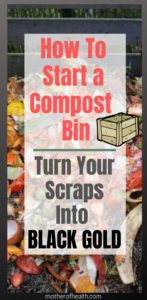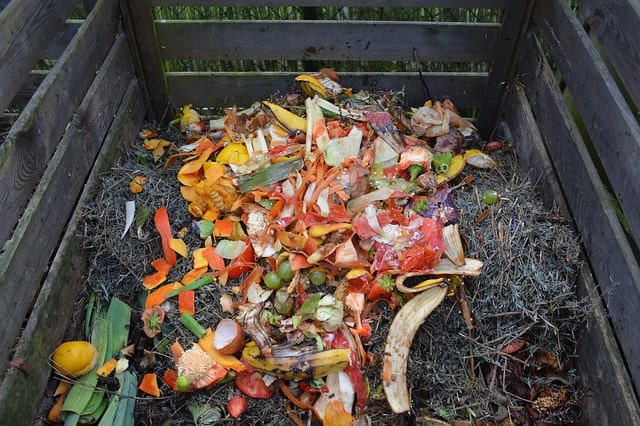As a gardener, you hear and read about the importance of amending the soil by adding compost. This ingredient adds nutrients, improves aeration, and increases drainage. So, let's take a look at how to start a compost bin now.
Lovingly described as ‘Black Gold’ by the serious home grower, compost is a necessity for a successful crop. This happens by simply mixing compost into existing soil, as you’ve likely read in many places. Rarely do articles mention that commercially manufactured compost is often lacking and does little to improve soil quality. This is your cue to learn how to start a compost bin. Making compost yourself allows control over each step of the process.
You might have purchased bag after bag of compost at the home improvement center, only to be disappointed in the results. This look into the manufacture of commercial compost explains why you should learn how to start a compost bin at home instead of purchasing compost by the bag.
Why Add Compost to the Soil?
Healthy, top-producing plants are the result of optimum soil conditions. Adding compost is friendly to the environment and an organic way of improving the soil. Use compost instead of chemical fertilizer as a sustainable means of maintaining healthy plants or as a top-dressing or mix it into the soil. You can liven up those houseplants with a sprinkling of ‘Black Gold’ on top.
Compost is a dark, crumbly, humus with no smell. It attracts earthworms that leave frass and aerate the soil. This substance helps with water retention, soil drainage, and pH levels. It supports essential bacteria and nematodes that exist within the earth.
You’ll be pleased with plants that show healthier growth. Some suggest that making a tea from finished compost and feeding plants with it can control or detract insects. The correct balance of materials provides aerobic conditions and encourages the microorganisms that work there to break down your scraps with no odor.
How to Start a Compost Bin
There are many designs online that show how to make your compost bin. It does not have to be complex. If there’s a woodworker in the household, take advantage of those skills. Build the popular three-bin system and move the compost as it decomposes to different levels of readiness. You can use a single bin, or buy a rotating turner. When deciding how to start a compost bin, you may choose an enclosed pile on the ground.
This is the simplest method and we’ll discuss this here. The location of the compost pile should be as convenient as possible without detracting from your landscape. Use compatible materials, such as upright pavers, cinder blocks or bricks to enclose a 3 X 3 area that gets at least partial sun and is convenient to a water source.
Keeping Weeds Out of the Compost
Add landscape fabric, plastic, or a sheet of plexiglass under the enclosure materials. Most online instructions don't mention this step, but I find it essential. This prevents weeds from growing up through your compost.
If weeds go to seed in the compost pile, you’ll eventually move them to all areas of your landscape, so it is important to keep the ground covered. Place your enclosure materials around the ground covering and you’re ready to make compost.
Materials for Making Compost
Add a few pots of used potting soil if you have it around. If there’s a chance a diseased plant was in the pot, don’t use it. The same for plant materials in the pile, avoid using those that might have been diseased or pest-ridden. Soil holds on to fungi and pathogens that cause plant illness that we want to avoid. Mix the pile with a shovel or pitchfork.
You need a balance of nitrogen and carbon and you'll need approximately two to three times as much browns as green.
Brown and Green Compost Materials
Browns = Carbon
Dry leaves
Straw
Twigs
Paper Napkins
Newspaper
Greens = Nitrogen
Food scraps
Coffee grounds
Garden scraps
Tea bags
Fresh grass clippings
Water, Air Flow and Covering
Using Your New Black Gold
When your compost looks and smells like soil, it's ready to use. Just mix it into your garden beds or spread it over the top. Just remember, compost is not a replacement for soil, rather it is a natural fertilizer to feed your soil and plants, so add a few times a year for best results.

Kitchen scraps are a wonderful addition to your compost heap. Peelings from fruit and vegetables, coffee grounds, tea bags, and eggshells are appropriate additions. Chop your peelings into small pieces if you want finished compost more quickly.
Meat, dairy, and oils are not.
You may include fireplace ashes if they are from natural wood.
Written by Becca Badgett
Becca is a long- time gardener with a passion for growing organically in the vegetable garden and sharing her experience. She believes everyone should grow a herb garden, inground or in containers and use those herbs on a regular basis to improve overall health. Her passion for growing led her to attend a Horticulture Program at a local community college and share what she’s learned with numerous articles on the web.
She is certified in Greenhouse Management and Operations, Landscape Design and is licensed as an NC Pest Control professional. Take advantage of her expertise through our gardening articles and get your garden growing. She contributed to the book “How to Grow an Emergency Garden”, available on Amazon. Read it free on Kindle Unlimited

